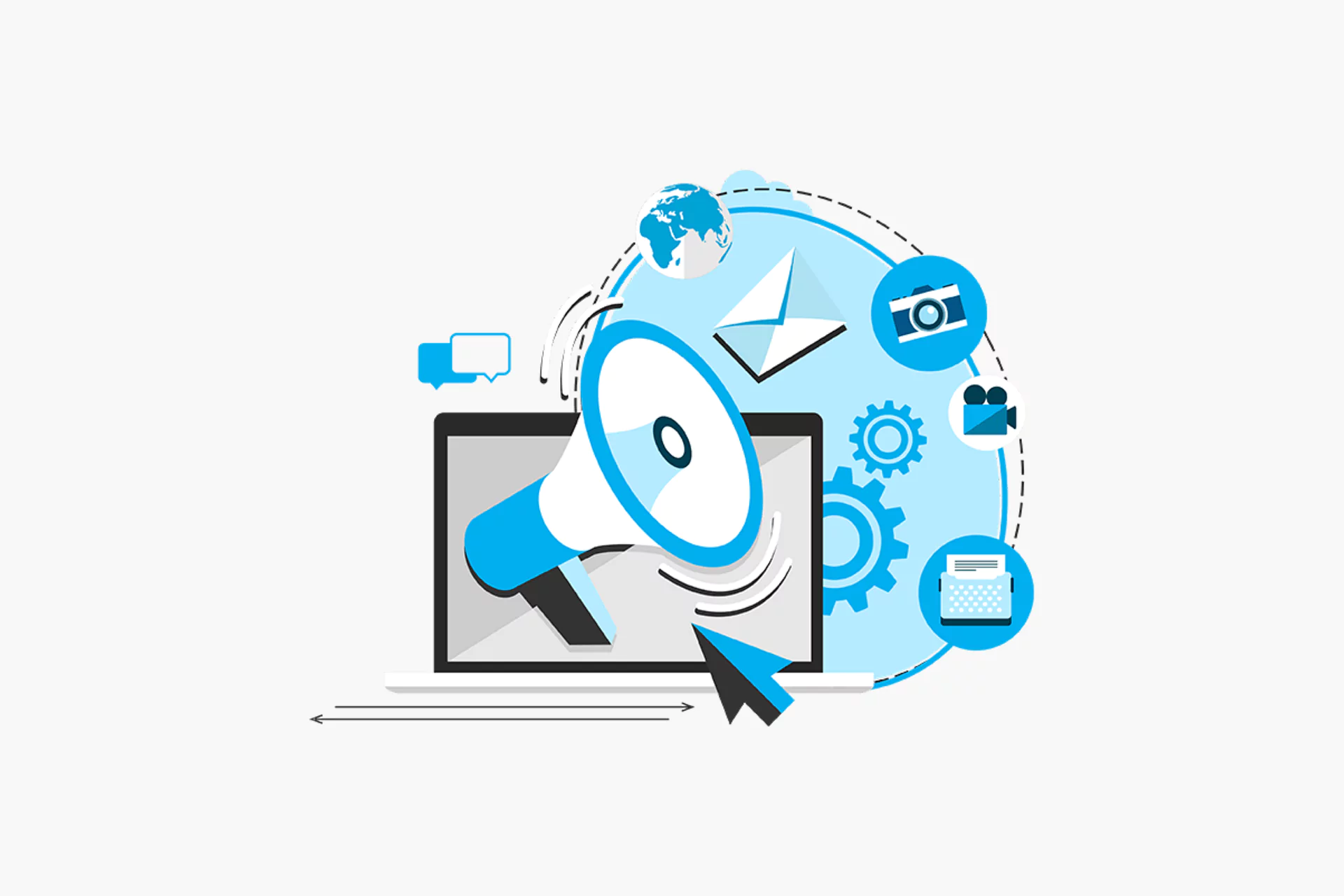Originally published January 13, 2021 , updated on July 4, 2025
In today’s B2B landscape, content marketing has proven to be an important strategy for generating high-quality sales leads. With valuable, relevant content, businesses can establish authority and guide potential clients through the buyer’s journey.
Content marketing can provide your company with the boost it needs. Rather than attempting to do this in-house, a professional content marketing agency can handle the whole process from start to finish and provide measurable results. Below, we unpack what content marketing is, the advantages for your business, and the process behind using expert content marketing services.
What Content Marketing Really Means
Content marketing is a strategic approach to creating and distributing content to attract and retain a clearly defined audience. Unlike traditional advertising, which interrupts a wide range of consumers with sales-driven messages, content marketing focuses on educating or entertaining people who are already interested in your product. In other words, potential customers. By positioning your business or brand as an authority in its field, you build trust with this targeted audience.
Content comes in many forms. Articles, case studies, and white papers can be used to address pain points and provide solutions. Another engaging content format is short-form videos. These videos, typically under 90 seconds, boast a 50% retention rate and are instrumental in influencing purchasing decisions, with 73% of consumers using them for product research.
High-quality content, however it’s presented, creates connections by addressing audience challenges and leading them from awareness to action.
The Benefits of Content Marketing
Content marketing is one of the most powerful tools for building long-term brand success, offering benefits that extend far beyond simple promotion. Consistently delivering valuable and relevant content helps businesses to:
- Establish trust and credibility within their industry
- Create stronger customer relationships
- Increase brand loyalty
- Fuel organic traffic by improving search engine rankings
- Reach their audience without relying solely on paid advertising.
Content marketing aligns with audience interests, making it more engaging and effective. Ultimately, it’s a cost-efficient, sustainable strategy that enhances visibility and fosters long-term customer engagement.
Why Is Content Marketing Important?

The latest research indicates that 90% of marketing leaders anticipate a twofold increase in content demand over the next two years, with 50% expecting a threefold surge. To meet this growing need, businesses must stay current with digital trends so they can effectively cater to their audience. Search engines like Google prioritize websites that have a substantial amount of content, and SEO and lead generation are all about increasing time on the page and building engagement.
You can do this by following the EEAT guidelines with your content:
- Experience – Share first-hand knowledge, case studies, or real-life insights to show your audience that your content is grounded in actual use or understanding.
- Expertise – Ensure that your content is accurate to boost your credibility.
- Authority – Build recognition through demonstrating thought leadership in your industry.
- Trust – Strengthen trust with up-to-date facts and well-researched articles.
Positioning yourself as an expert in your field means that your content automatically gains more authority. The more authority your content has, the more your audience will trust you. In turn, having the trust of your audience is vital for improving your search rankings.
How To Generate Leads Through Content Marketing
Now let’s dive into how you generate B2B sales leads with content marketing. Content marketing is a wide field, with dozens of subfields. Here are just a few of the ways you can generate B2B sales leads with a targeted content strategy:
- Host a webinar: Choose a topic that should appeal to your target audience and host a webinar on that subject. Remember though, webinars are not the time to sell your product or service. They’re for informing your target audience about a topic they’re already interested in or answering some of their questions. Webinars are a relatively low-cost way of getting your message in front of a large audience and generating leads.
- Publish research reports: Using research reports as lead magnets can be a great source of leads, especially in the B2B sector. Most businesses know the value of research, so they’re likely to share their contact information in exchange.
- Publish videos: Videos are no doubt the content with the most current appeal and the most viral potential. After all, YouTube is currently the second-largest search engine in the world. If video marketing is not a part of your content marketing strategy, you’re losing out on one of the biggest sources of lead-generating content.
- Create blogs: Blogs are far and away the best form of content. As long as they’re well written, blogs are more likely to appear on the SERP than any other type of content. Blogging effectively can allow you to dominate the SERP, build authority, and gain recognition and trust from your target audience.
Of course, all of these media can be used together. For instance, you can publish the results of a research paper on your blog. Announce your upcoming webinar on your blog. Then, publish video snippets of that webinar to your YouTube channel. You can use each technique in tandem with the others.
Why Your Content Marketing May Not Be Working
Right now, more B2B companies are using content marketing than ever before. It’s one of the most effective forms of marketing available today. Unfortunately, most businesses dive in head first, creating content randomly without first devising a strategy.
Often, they’re blithely assuming that their audience wants to read endless blogs about their products or services or watch 20-minute product tutorials and testimonial videos. As a result, many content marketing campaigns fall flat at the first hurdle. They fail to generate the leads they’re hoping for. There’s a simple reason for this.
“Content without strategy is just stuff.” – Arjun Basu
The internet is a massive place, and there’s a ton of content out there. Some of it’s good, some of it is not. Much of it is entirely out of date. So the main challenge in generating leads with content marketing becomes offering relevant and helpful content that your audience actually wants to read.
Most people don’t have the time to read content that doesn’t answer their pertinent questions – especially in the B2B sector. The bitter truth is, they don’t care about your product or service. They also don’t care about your new office or the latest office birthday. They want answers to their questions and solutions to their problems.
Besides these basic mistakes, there are a few other reasons you could be failing to generate B2B sales leads:
- Lack of a detailed content marketing strategy
- Lack of buyer personas
- No clear goals or KPIs
- Lack of creativity or differentiation
- No promotional activity
In this digital age, audiences want more than just information and solutions. They want product comparisons and accurate reviews, as well as pricing documents. If you’re not offering any of these, there’s a good chance that your visitors will just click away.
Content Marketing Tips
If you want to generate B2B sales leads with content marketing, there are a few things to keep in mind:
Help People Do Their Jobs
Your B2B content should, above all else, be useful. Whereas B2C content can be either educational or humorous, the target audience in the B2B sector is on the job. They need to sell your solution to the people they work with. The easiest way to generate B2B sales leads with your content is to solve their problems and make their jobs easier.
You can do this by researching your audience, including the positions they’re likely to hold and the common problems they face. With these factors, you can start building a buyer persona (or multiple ones) and applying that persona to the content you create.
HubSpot is a prime example of B2B content marketing that helps professionals do their jobs. Instead of just promoting its software, HubSpot provides free, valuable resources like blog articles, templates, and ebooks that solve real industry challenges, such as social media planning or sales proposals.
Their free CRM and marketing tools further demonstrate their expertise, making it easier for potential customers to trust and invest in their solutions. Focusing on practical, problem-solving content helps HubSpot attract leads and seamlessly guides prospects toward its paid offerings.
Deliver the Right Content at the Right Time

Though you might have created a great piece of content, and it might be getting good traffic, there’s no guarantee that the audience you’re attracting will be ready to make a purchase. Maybe it’s because you’re delivering your content at the wrong time. If you’re not delivering content to your audience based on their position in the funnel, it’s unlikely that they will convert.
Think about it like this. When you meet someone new, unless the stars have aligned, you don’t jump right into being best friends. Rather, you start with some small talk and get to know each other over time. The same principle applies to content marketing. If your content isn’t converting, maybe it’s because you’re treating brand-new acquaintances like old friends.
So, what’s the solution? Create a segmented strategy with different goals for different content, making use of different buyer personas in varying stages of the funnel.
Gate Your Content
One of the most obvious ways to generate B2B sales leads with your content marketing is to gate it. Offer access to your content in exchange for the reader’s information – their name, email address, and company, for example.
Of course, it won’t work for every piece of content, and it won’t work for every business.
If you’re not sure which content is worth gating, here are some examples of the pieces of content that are considered most valuable:
- White papers and industry research
- Exclusive ebooks
- Expert-led training and webinars
Don’t Forget About Social Media

Social media works especially well in conjunction with content marketing. Many B2B buyers have social media profiles, and by sharing links to your content, you can catch them in their downtime and ‘plant the seed’ in their minds. From social media, you can drive them to informative landing pages or get them to engage with your content.
How Content Marketing Agencies Optimize These Strategies
Content marketing agencies leverage their industry expertise with specific, proven approaches and strategies that streamline content creation. They use advanced tools for performance optimization and adapt the strategy to achieve the best business results.
Here’s how these various strategies add value:
1. Industry-Specific Insights
Agencies conduct in-depth research to understand industry trends, audience pain points, and competitive landscapes. Crafting content tailored to a business’s specific sector means the messaging in the copy resonates with decision-makers and addresses real-world challenges. This targeted approach helps brands establish authority and relevance in their field.
2. End-to-End Content Creation & Management
Blog articles, white papers, video content, and case studies are only a few content formats that content marketing services address. A content marketing agency can handle the entire content lifecycle, from ideation, creation, editing, and distribution. This allows businesses to maintain a consistent publishing schedule without overloading internal teams. Agencies also optimize content for SEO, ensuring higher visibility and engagement.
3. Data-Driven Optimization & Advanced Tools
Using AI-powered analytics and marketing automation tools, agencies track performance metrics like engagement, lead generation, and conversion rates. This data-driven approach helps refine strategies, ensuring content continuously improves and aligns with audience needs.
Final Thoughts
Content marketing can be an amazing source of leads. The key to content marketing success is to know your audience. Know their problems, and the questions they have, and provide the answers and solutions they’re looking for.
Don’t limit yourself to just blogs. Find the type of content that works best for your business and your audience. For some, this may be online courses and webinars. For others, it may be white papers and other industry research. No matter what your strategy, put your audience’s needs first for the best results.
If you need professional content marketing and writing services to boost your business’s success, we’re here to help. Goodman Lantern is an award-winning content marketing agency that serves customers across five continents.
Contact us to learn more about our services.
Post Views: 714


















